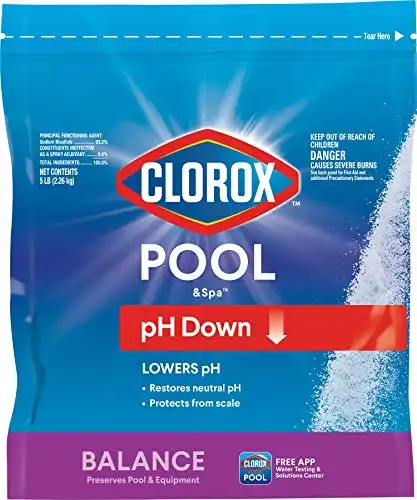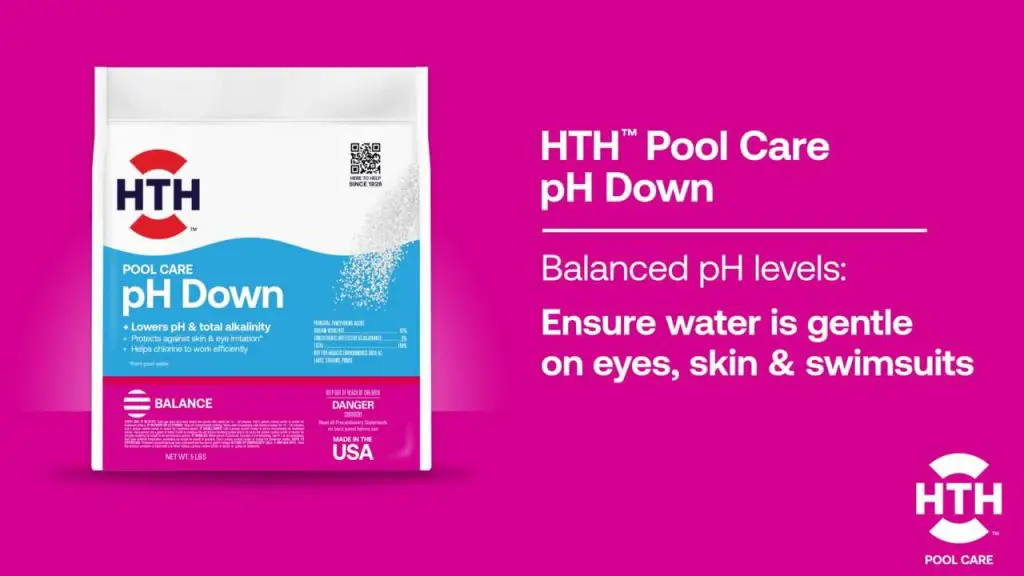Welcome to our comprehensive guide on how to lower the pH level in your pool! Maintaining the correct pH balance in your swimming pool is essential for ensuring a safe and enjoyable swimming experience. When the pH level of your pool water is too high, it can lead to skin and eye irritation, cloudy water, and reduced effectiveness of sanitizers. In this article, we will discuss effective methods to bring the pH level down in your pool and restore it to the optimal range.

Credit: www.amazon.com

Credit: www.swimuniversity.com
Understanding pH Levels in a Pool
pH is a measure of how acidic or basic a substance is, and it is crucial to monitor and adjust the pH level of your pool water regularly. The ideal pH range for pool water is between 7.2 and 7.6. When the pH level rises above this range, it means the water is too alkaline, and steps need to be taken to bring it back into balance. High pH levels can lead to scale formation, cloudy water, and reduce the effectiveness of chlorine.
Methods to Lower pH in a Pool
There are several effective methods to lower the pH level in your pool and restore it to the optimal range. Let’s explore some of the most common techniques:
1. Use Muriatic Acid
Muriatic acid, also known as hydrochloric acid, is a powerful chemical that is commonly used to lower pH levels in pools. When using muriatic acid, it is essential to follow the manufacturer’s instructions carefully and wear appropriate safety gear, such as gloves and goggles. Add the acid to the pool water gradually and test the pH level frequently to ensure you do not overshoot the desired range.
2. Use Sodium Bisulfate
Sodium bisulfate, also known as dry acid, is another effective chemical for reducing the pH level in a pool. It is available in granular form and can be added directly to the pool water. Like muriatic acid, it is essential to follow the manufacturer’s instructions when using sodium bisulfate and test the water regularly to monitor the pH level.
3. Aerating The Pool
Aerating the pool water is a natural and effective way to lower the pH level. By introducing air into the water, carbon dioxide is released, which helps to decrease the alkalinity of the pool. You can aerate your pool by running the pool pump, using a water fountain or waterfall feature, or simply allowing the water to splash back into the pool from a height.
4. Use A Ph Reducer
There are commercially available pH reducers specifically designed to lower the pH level in pools. These products are easy to use and can quickly bring the pH level back into the optimal range. Be sure to follow the manufacturer’s instructions when using a pH reducer and test the water regularly to monitor the pH level.
Tips for Maintaining the pH Level
In addition to using the methods mentioned above to lower the pH level in your pool, here are some tips for maintaining the pH balance and preventing it from rising too high:
- Test the pH level of your pool water regularly using a reliable test kit.
- Keep the pool water properly balanced with the right levels of alkalinity and calcium hardness.
- Ensure the pool filtration system is functioning correctly to help maintain water clarity and balance.
- Monitor and adjust the pH level as needed to prevent any issues with water quality and clarity.
- Consider using a pool cover to prevent debris and contaminants from entering the pool, which can affect the pH level.
Conclusion
Maintaining the pH level in your pool within the optimal range is essential for ensuring clean, clear, and safe swimming water. By following the methods outlined in this guide and implementing the tips for maintaining pH balance, you can enjoy a pristine pool all season long. Remember to test the water regularly, take prompt action if the pH level is too high, and always follow safety precautions when working with pool chemicals. Here’s to a summer filled with refreshing dips in a perfectly balanced pool!





